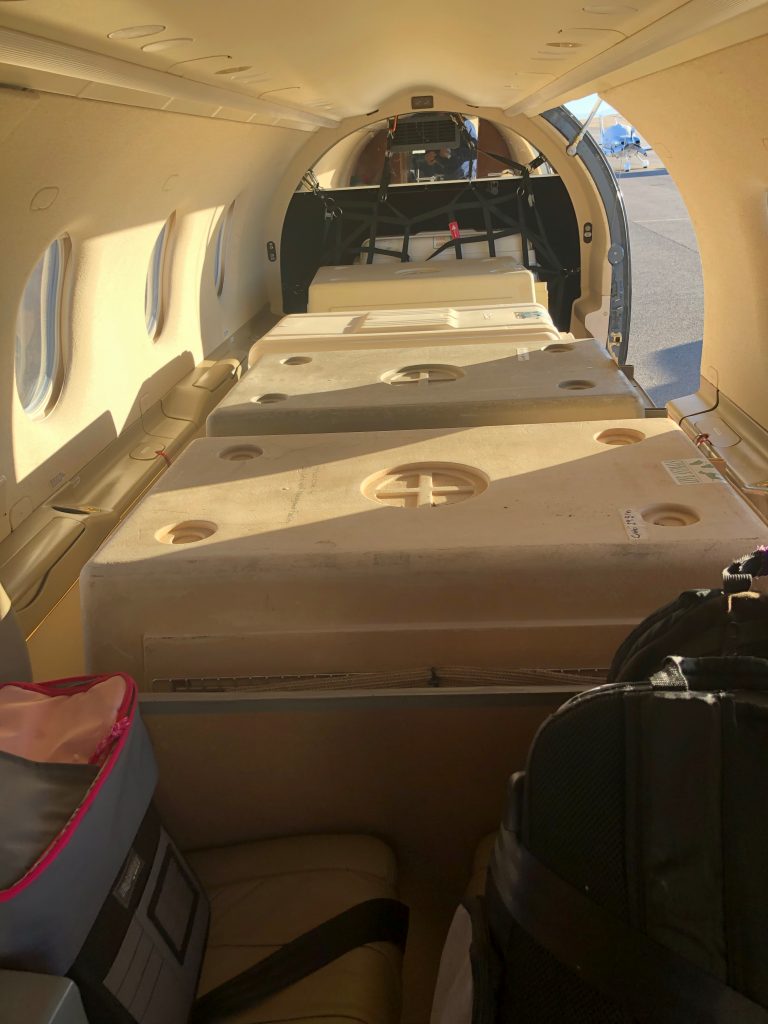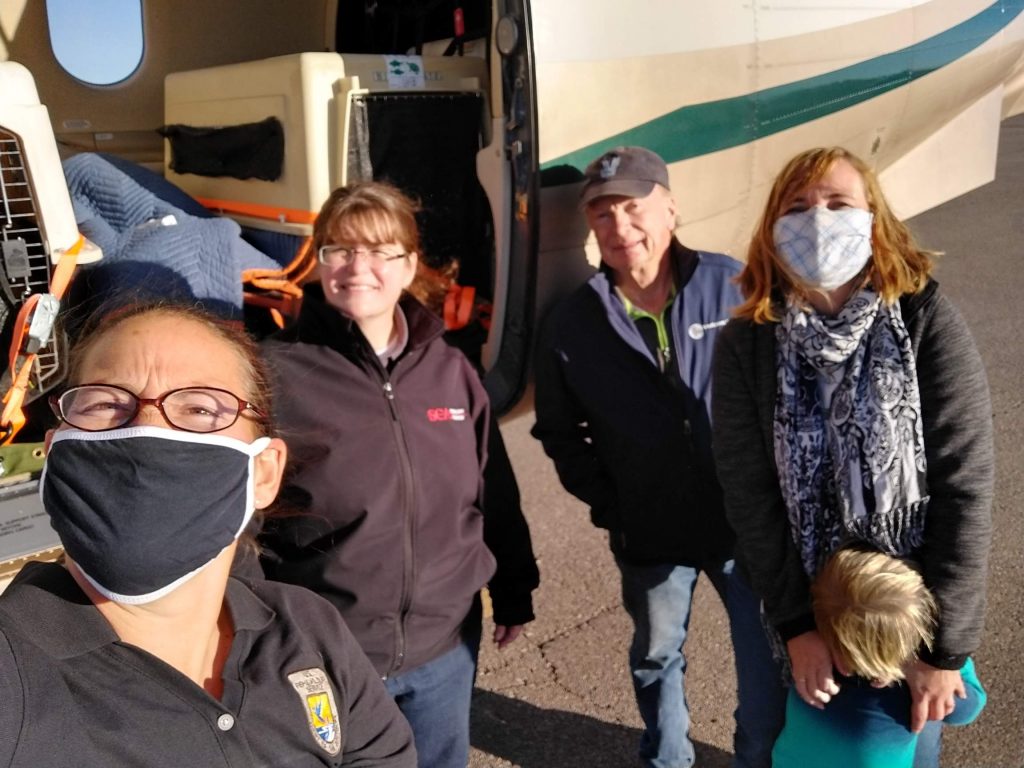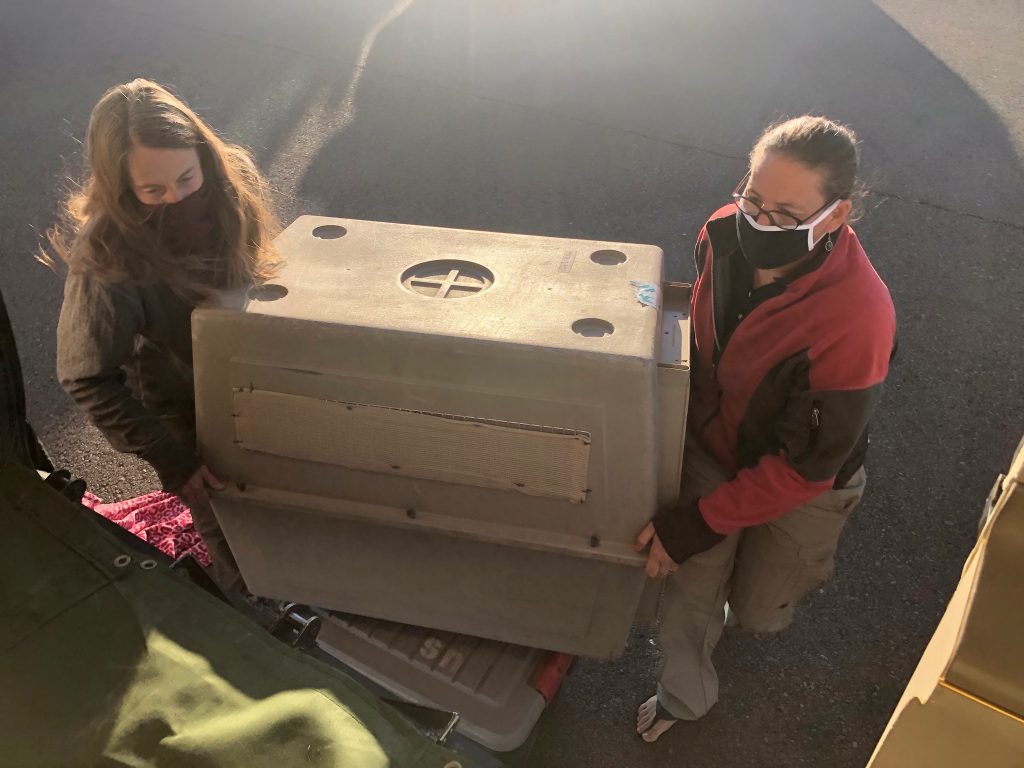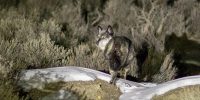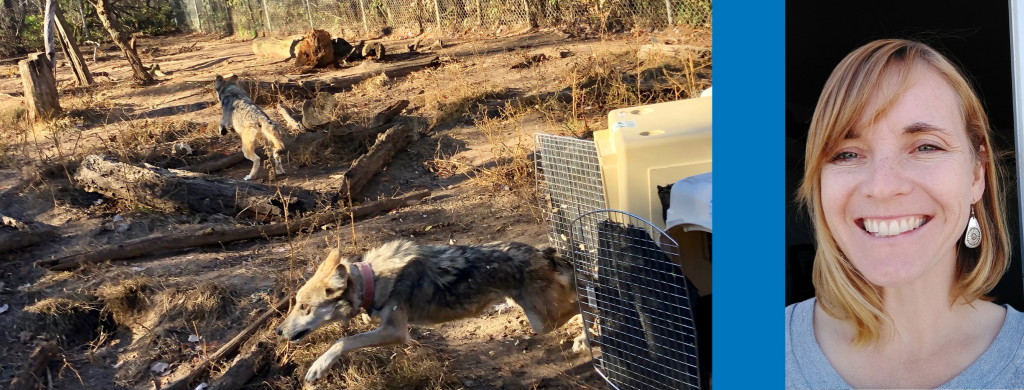
Written by Audrey Ek-Psomas, LightHawk Eastern Program Coordinator
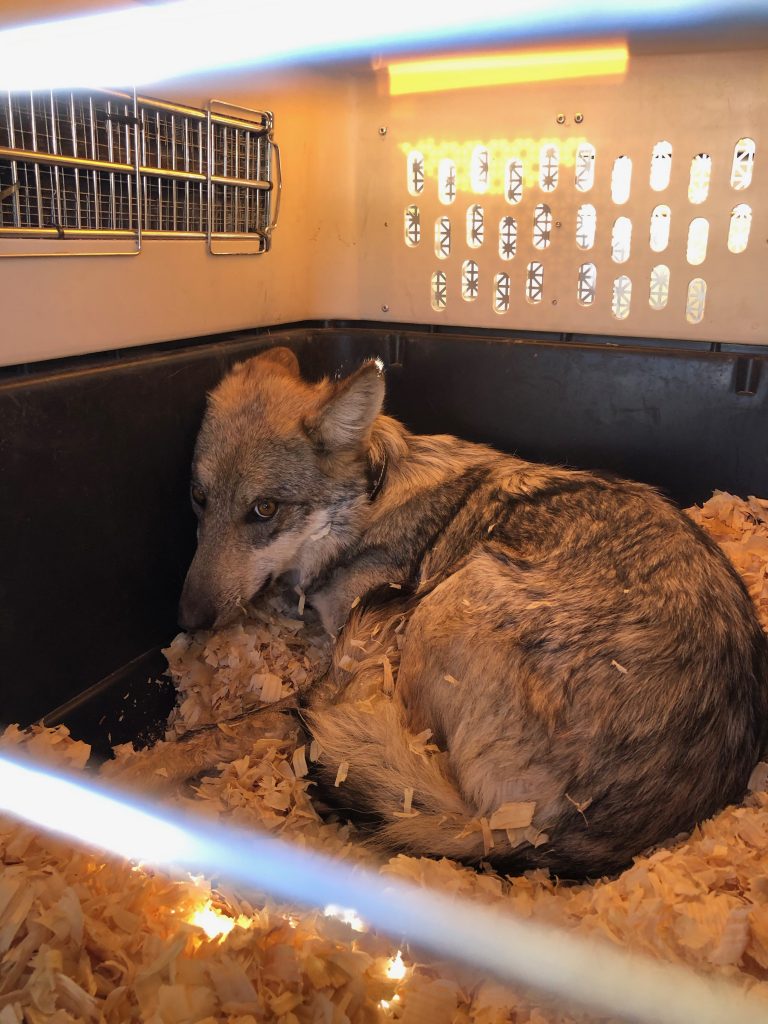
It’s about 25 minutes from the I-25 off-ramp, and after a few miles on dirt roads, I double-check the directions as it feels like I’m headed out into the middle of nowhere. This is the second Mexican wolf capture I’ll be participating in, but this one feels different. Partly because I haven’t seen other people outside my Covid bubble in so long, but mostly because this time, I’ll be joined by LightHawk volunteer pilot Chuck Yanke and his co-pilot Julie Tromblay, who have just arrived from Texas and are following behind me in their rental car. Although I’ve worked with Chuck on multiple flights to transport wolves and other species, this is my first time meeting him in person. And this is a rare opportunity, a wildlife biologist’s dream, to get hands-on experience with Mexican wolves that I’ve been working to recover for three seasons now.
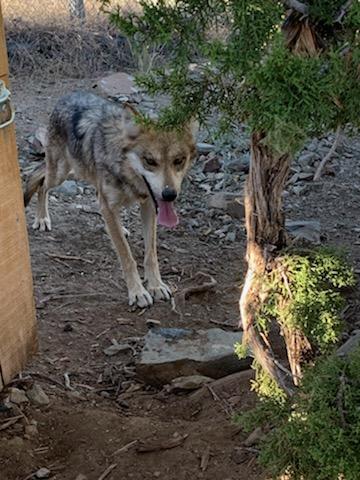
As an endangered species, the wolves are carefully paired with potential mates to make sure that while the species is being brought back from near-extinction, genetic diversity is maintained in both the captive and wild populations. Every year, wolves are moved around the country between captive facilities to be paired with mates or moved to make room for these pairings. This time, we’re moving five females from a facility south of Albuquerque to one in Minnesota to make room for breeding pairs in the following months. If the distances are short, they’re driven. But in cases like this, they’re flown. Prior to the pandemic, commercial airlines used to be a viable option. Although, if you ask anyone involved in those commercial airline transports, it was a nail-biting scenario: dropping an endangered species off at one end, and hoping they would survive the cargo hold and that there wouldn’t be any delays en route that might result in them being kept in their crates on a tarmac or in a hangar too long. As shy, timid creatures, these transports can be very stressful for the wolves, and stress has a direct effect on health and thus fertility. LightHawk pilots provide a much-needed alternative, a direct flight customized to the needs of the partners and the wolves, reducing time and stress on the animals. With commercial flights canceling due to low demand during the pandemic at the same time as the airlines were already becoming more restrictive about wildlife transport, these long distance transports are increasingly not possible without donated private flights. We have been doing these flights since the early 2000s, but a lot more of them over the past few years as both the need and our pilot capacity and engagement in this project has increased. This year, we did two cross-foster wolf pup flights at the height of the pandemic. This summer my colleague Esther and I were invited to participate in the virtual annual meeting of all the facility partners, where we received a resounding thanks for all the work LightHawk and our pilots have contributed over the years to Mexican wolf species survival.
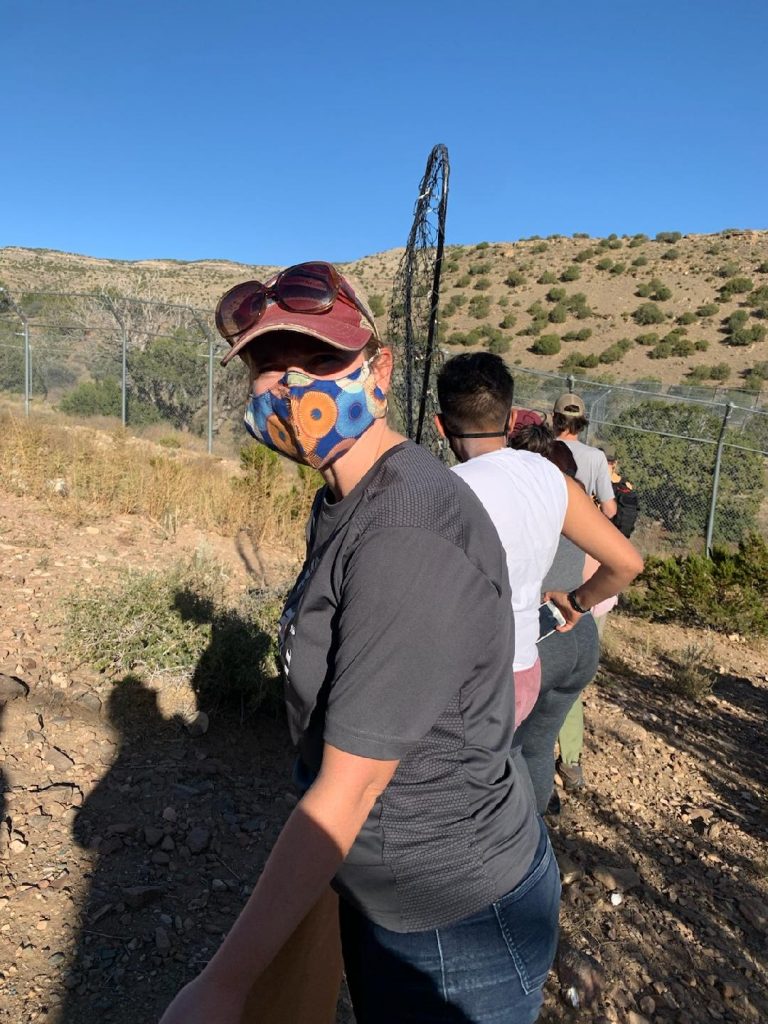
We arrive and after a thank you to the pilots from Melissa Kreutzian, the USFWS biologist and manager of the wolf management facility, we divide up into vehicles to head up to the enclosures. There’s about 15 volunteers, and we’re all here because of an interest and respect for the animals. For me, this allows me to better understand what happens before the wolves arrive at the airport for their LightHawk flight, and better anticipate potential delays or hiccups in that process. Capturing wolves is no easy feat, and due to the number of wolves traveling and size of the enclosures, USFWS prefers to do these captures the evening before a flight in case there are delays. The process is simple, in theory, using boards, nets and a few other devices, we fan out into a line to cover the width of the enclosure, and slowly walk toward one end, gently pushing one wolf at a time toward a wooden box. Some take the cue easily, while others choose flight, looking for breaks in the line or even leaping up the fence to get over the line. Once in the box, the wolf team goes into action, as they gently restrain and muzzle the wolf so that they can do their annual vet check. The animals are given some vaccinations, their weight is recorded, and they are given fluids as they won’t be able to drink for the duration of the transport. Then the captured wolf is placed in the crate, and you do it all again. What struck me the first time I saw one of these wolves close up is how small they are, closer to a medium-sized dog than their larger gray wolf cousins. That and how scared they are of us. Not like the stories we all grew up with.
We end after dark, and we all head off to get some rest before the meeting at the airport the following morning. When I arrive the next morning, the team has already loaded all five wolves onto Chuck’s Pilatus PC-12, including placing the smaller of the crates in his luggage area. Facing the open cargo door, they just fit, just as Chuck’s measurements indicated before agreeing to the flight. The 4-hour flight goes off without incident, and Chuck and Julie are taken by the team at the Wildlife Science Center to see the wolves released into their new home in Minnesota. Just 20 hours after being placed in their crates in New Mexico, the wolves are only too happy to be released.
“We’d never been on one of the captures before. That was a real bonus, it shows you the rest of the story. I was really impressed and amazed at the dedication of the staff to the animals and trying to keep it as wild and natural as they could in limiting human contact to maintain that wildness. I didn’t realize that the Mexican wolf was down to 7 members of the species when they started to bring them back. The five I carried could have been most of their population. Makes me feel like I’m really making a difference. ”- Chuck Yanke
Thank You to pilot Chuck Yanke and co-pilot Julie Tromblay.
